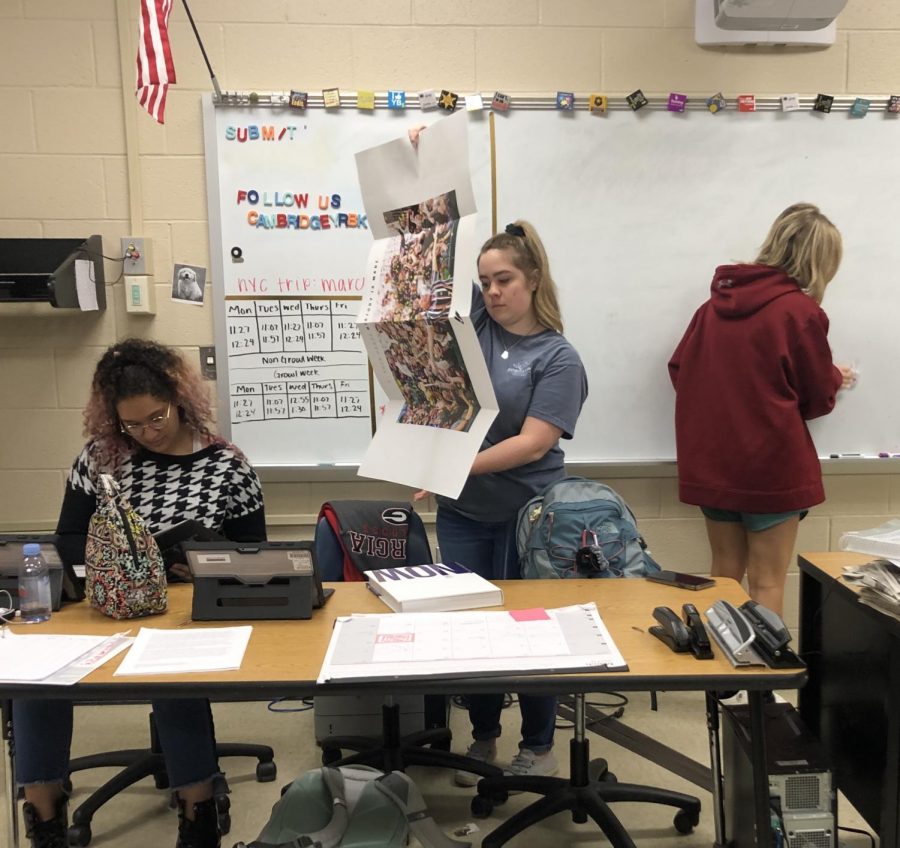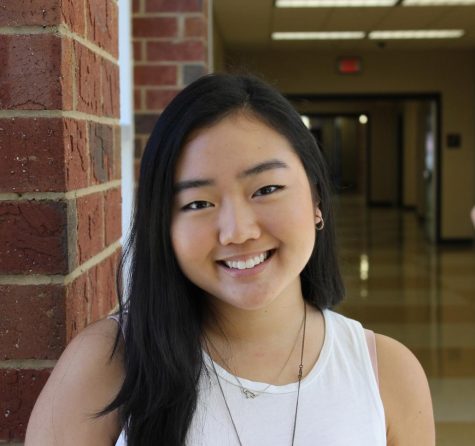“How We Remember High School”: The Makings of Cambridge Yearbook
Yearbook staff members hard at work designing, publishing and submitting their book.
March 28, 2019
At the end of every May, students flood from the building, leaving behind the worries of the school year and heading into summer. As they leave, many take with them a glossy, 600-page memento of the year they just completed.
Filled with pictures, interviews and spotlights on different parts of the school, yearbooks serve as living time capsules to immortalize the events of the school year.
This book, however, doesn’t just materialize on its own.
In fact, there is a dedicated staff of people who work hard to make sure that the yearbook gets made.
The school’s yearbook staff, which meets every day during fourth period, is responsible for every aspect of the book: brainstorming the cover, creating the designs and taking the hundreds of photos that grace its pages.
The school’s journalism classroom, a computer lab with a bright mural resembling Van Gogh’s “Starry Night” splashed along the back wall and a patchwork of artistic ceiling tiles, is buzzing with life as soon as the third period bell finishes its last ring.
The staff members walk in and find their respective computers, with some logging into PhotoShop or StudioWorks, and others heading out to conduct interviews or take photos almost as quickly as they walk in.
Senior Maggie Martin, who serves as the current Editor-in-Chief of the publication, hardly has time to sit at her own desk as she is called by various staff members for help operating computer programs or choosing fonts.
Martin, along with the rest of the staff, works throughout the year to ensure that the book is perfect.
The process of creating the yearbook begins at the end of the previous year, as staff members begin to brainstorm ideas for the theme.
Then, as returning staff members come back to school in August and welcome new staff members, the leadership buckles down for the annual yearbook camp.
This camp, which is held at Brenau University, is where yearbook staff members from all over the state can go to kick start the production of the yearbook by nailing down the themes, fonts and colors they want to use.
After returning from yearbook camp, they can begin working to meet the six deadlines that are set throughout the year. These deadlines are set for topics such as academics, clubs, sports and student surveys.
Junior Editor Ashleigh Hayes describes her favorite part of the experience as being “getting to interview people and kind of see how the whole book comes together.”
According to staff members, being a part of the yearbook staff can come in handy even outside the classroom.
“I was really shy coming in,” said Hayes. “I thought yearbook would really help me branch out and come out of my shell a little bit”
Now, Hayes serves as a junior editor on the staff, and says that yearbook has taught her “graphic design, how to be a better writer, photography and different aspects of photography, PhotoShop, communication and bettering [her] leadership skills.”
Senior and first year staff member Masyn Berry agrees, saying that she has gained valuable skills from the experience.
“Definitely how to write better,” Berry said of what she has learned from the class.
Martin, who will be graduating this year, says she wants this year’s book to be especially appealing to the student body.
“My goal is to make people feel like this is their book,” she said.
And with this year having the most yearbooks sold, along with the most senior ads sold and the highest page count out of all previous yearbooks, the pressure is on to create a good final product.
This pressure was mounting as their final deadline, March 15, loomed over their heads.
“We’re under a real time crunch in the spring,” said Martin.
Through creating the yearbook, Martin feels she has helped to shape many students’ high school experience.
“I feel like I’ve impacted how people remember high school,” she said.


